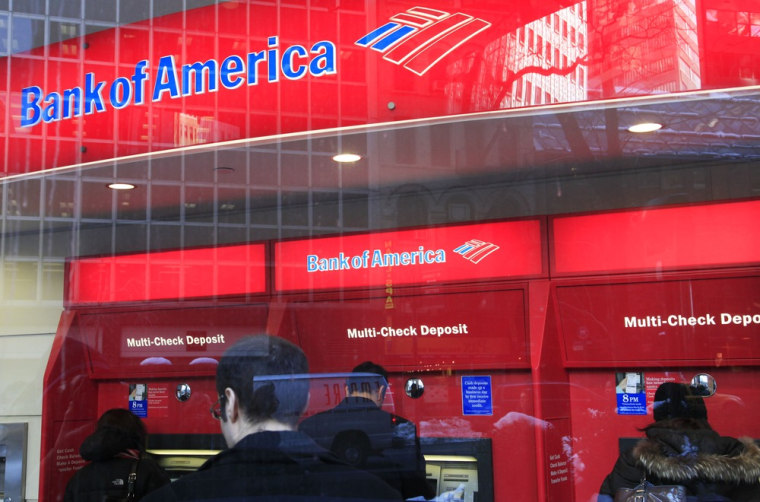Angela Malerba, who works in public relations in Boston, carries a debit card because she likes to know when she buys something that she has enough in her account to pay for it. But paying $5 a month to use her own money? That's too much.
So when Bank of America starts charging the fee next year, Malerba figures she'll rely more heavily on her credit card. Or, in a strategy that seems almost quaint in these swipe-and-go times, she may just carry more cash.
"Paying $60 a year in debit card fees just seems absurd," she says.
The 38.7 million people who carry Bank of America debit cards will face a similar decision in the latest example of banks raising fees or establishing new ones — not just for debit cards but for checking accounts, visiting ATMs, even talking to a teller.
Bank of America's announcement hits particularly hard because banks have spent the past decade encouraging their customers to go for the ease of debit cards, which deduct purchases immediately from a checking or savings account.
In 1995, debit cards accounted for only 1 percent of the transactions when people pulled a card out of their wallet to pay for something, with credit cards making up the rest.
Popular plastic
Debit cards grew steadily, hitting 50 percent in 2006. Today, two-thirds of the time someone reaches for plastic, it's debit, according to the Nilson Report, which tracks the card industry.
Credit cards still make up 56 percent of the money spent, according to the report. So when people use debit, it's for the forgettable, smaller transactions of everyday life — a pack of gum or a cappuccino.
Banks have cashed in big. They collect about $19 billion a year from swipe fees, the pennies they collect from a store every time you run your card through a magnetic reader at the checkout counter.
On Saturday, that revenue will be cut almost in half. Federal rules will cap the amount banks can charge merchants at about 24 cents per transaction, down from an average of 44 cents.
It's the latest regulation imposed on banks. Last year, strict rules on credit cards limited when they could raise interest rates and virtually eliminated customer fees for going over credit limits. Then the Federal Reserve tightened up when and how often banks could charge for checking account overdrafts.
Each regulation is aimed at reducing the costs for consumers, but they've chipped away at bank revenue — and left banks going so far as to make the customer pay for services that had been offered at no charge.
Paper is costly
Bank of America, for instance, created a checking account that is free only if the customer banks online and at ATMs. Get a paper statement or visit a teller, and there's an $8.95 fee for the month.
Customers are frustrated. Jose Bucheli, a graduate student in Albuquerque, N.M., thought back to the economic crisis of 2008, when banks pledged to stand with customers.
"But whenever they have the opportunity, they impose a new fee," he says. "I understand that Bank of America is a business, and trying to maximize its profits, but I'm trying to maximize my profits, too."
Bucheli doesn't like to carry cash and relies on his debit card for almost everything, so he isn't interested in getting around the fee by using a credit card. "I can change banks and beat the fees that way," he says.
Some banks are trying to take advantage of that impulse. The regulation doesn't apply to banks with $10 billion or less in assets, which may give some community banks and credit unions an edge.
And some larger banks are resisting the urge to tack on charges, instead trying a no-fee strategy to lure customers. Huntington National Bank, based in Ohio, has marketed "Asterisk Free Checking" since May. Mary Navarro, director of retail and business banking there, says the growth rate for new accounts almost doubled.
Dinging customer's bottom line
"It's not the customer's fault that the banks have more regulation," Navarro says. "These fees, that really does impact the consumer's wallet, and I don't think they like it."
They may grumble, but probably few will switch banks. Bank inertia is powerful: Think of the paperwork of changing direct deposits, the hassle of redirecting automatic bill-paying setups and the difficulty of figuring out exactly what other banks charge.
"Unraveling all that is a mess, and that's one thing that really works in the bank's favor for retaining the customer," says Brian Riley, research director of bank card analyst with TowerGroup, a consulting firm. "At the end of the day it's just hard to change."
